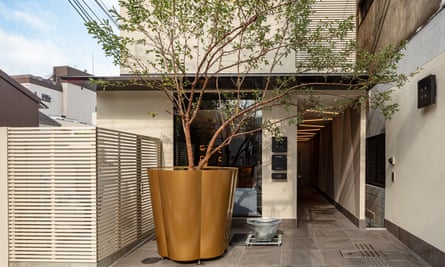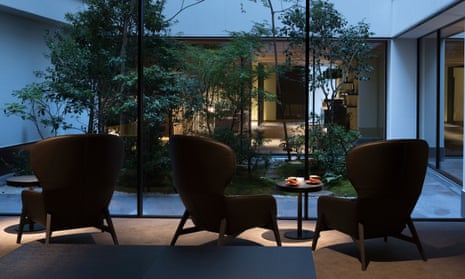A quick drink at Enso Ango involves a little more effort than most hotels – the bar is in a different building from most of the bedrooms, a good 10-minute walk away. Breakfast in the hotel restaurant? That’s a five-minute stroll to another building. With five separate locations around the centre of Kyoto, Enso Ango is Japan’s first “dispersed” hotel, though scattering the rooms and amenities a few roads apart is not for lack of space: the aim is to immerse guests in the local culture.

Between the main roads of Gojo and Shijo but away from the major tourist attractions, the hotel’s properties are described as being “out of the static loop of large hotels and staged photo opportunities”.
It is the first hotel from new brand Ango Hotels, and guest activities include zen meditation sessions with Buddhist priests of Ryōsokuin temple, Kenninji, obanzai (home-style) cooking classes, guided night runs passing the Kamogawa River and Shinto shrines, yoga, tatami mat workshops and talks from local artists.

Each building combines traditional and contemporary minimalist design by Japanese and Swiss artists,who have created everything from the decor to the uniforms, furniture and fittings, and the interior gardens, known as tsuboniwa – a common feature of Kyoto houses.
Depending on the building, rooms (from around £90 a night) range from compact with bunk beds, to family size with kitchenette. The restaurant is in the Tomi II building and serves fusion food, including pinxtos with a Japanese twist. Fuya I borrows from the design of traditional wooden machiya houses and includes a gallery space. The largest building, Fuya II, has a tearoom, tatami mat salon for meditation and yoga, and a gym. Tomi I includes a guest kitchen and lounge. And Yamato I, the smallest, has a bar, and is the closest to the busy streets of Gion.
The concept of dispersed hotels was developed in Italy, where they are called alberghi diffusi, and are often a means to revitalising semi-abandoned villages. Elsewhere in Europe versions can also be found in Slovenia, Portugal, Croatia and now Switzerland, where almost half of the buildings in the mountain village of Corippo, near Locarno, are currently being turned into a scattered hotel. The local population had dwindled from 300 to just 12 residents (11 of whom were over 65) prior to the redevelopment, and the town’s economic activity came from just one restaurant. The first cottage opened earlier this year, with the main launch scheduled for Easter 2020.
